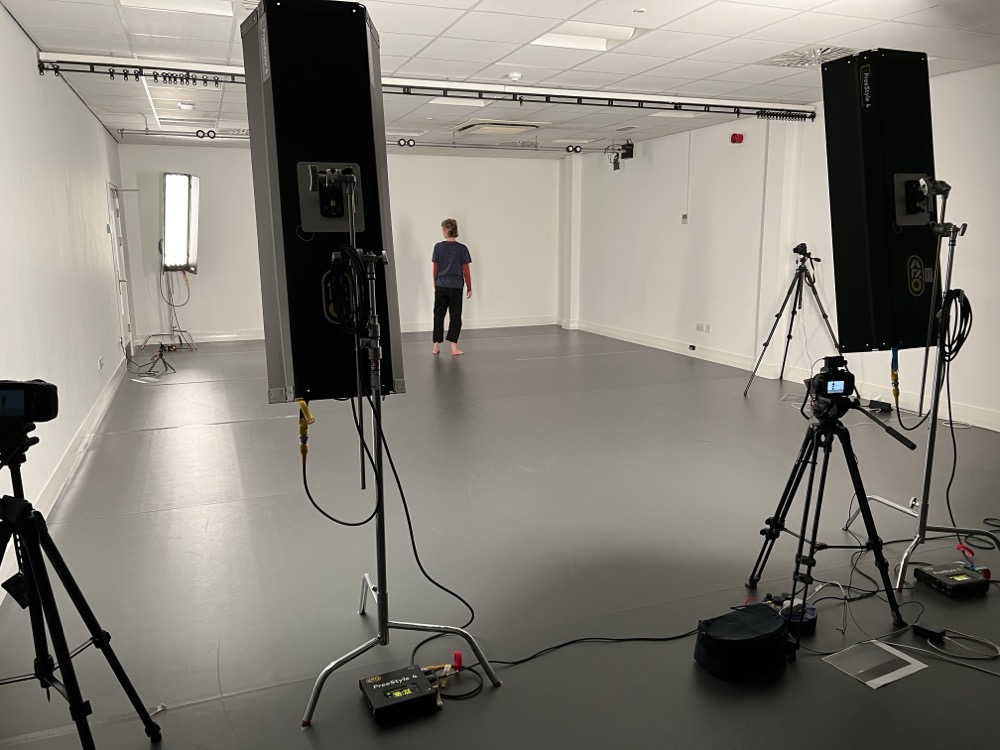Some more video but this time two separate video streams (one of Katye Coe, one of me (Simon Ellis)) placed side by side on the canvas. Two notes: i) I made no effort to match them or shift them in time; ii) the video is not slowed down at all.
Tag: documentation
-
shimmer again (video)
My colleague Heinrich Escano has been playing a bit more with using motion extraction from the simple footage taken from a still video camera (although in this clip there are some still images as well).
In this sample there are three different things to look at:
1) you can see what happens when there is movement in only one part of the body (the rest of the body effectively disappears);
2) motion extraction of a timelapse series of still images – this is the brief moment 19 seconds in
3) a simple moment in the last part when Heinrich increases the size of the image to simulate zooming in on Katye sitting
As I am watching I am increasingly drawn to how the motion extraction broadens my gaze across the entire body. That is, it asks me to see movement as a whole body activity even when there is the smallest quantity of movement happening. At a stretch I’d propose that this mirrors my attention when dancing – the kind of attention that absorbs the body as an entire field of energy.
-
response to shimmer
I had some interesting responses to the brief video shimmer from a couple of weeks ago. My colleague Scott deLahunta wrote:
[the video] really highlights the variation going on across the whole surface of the body, the small balancing adjustments, the small dancing going on. which you miss normally since your attention is dragged toward quicker, bigger things.
Scott was reminded of David Rokey’s watch, and written on that page is the following:
People are only visible if they are in motion. They float as outlines of themselves in a dimensionless void, and disappear again as soon as they are still.
-
shimmer
I’ve mentioned before in data data data and in low fidelity documentation just how complex the ways in which some of the practical work in the studio might be documented and shared.
A while back I happened across a simple post-production technique called motion extraction by the YouTuber Posy. It made me think that it might be a way to reach towards just how much movement is going on when it seems like very little is happening.
My colleague Heinrich Escano is a video artist and was keen to have a go. Here’s a brief sample of Katye Coe practising our version of authentic movement in the studio:
What I find most interesting is how the body seems to start to shimmer when there is next to no movement happening. I find my attention drawn in very closely to those actions and stillnesses. It’s not precisely what I am imagining but it’s a good first test or prototype.
-
low fidelity documentation
I’ve written and presented in another context about documenting complex, rich, high fidelity human experiences with low fidelity (or resolution) forms of documentation. When we point any kind of camera at a human being improvising there is vast difference between the internal experience of the improviser and what is visible.
In Losing Oneself Katye Coe and I are doing a version of authentic movement for four cameras which more or less cover the space. Three cameras are shooting time-lapses (every 3, 4 and 7 seconds respectively) and one camera is a locked off 4K video camera. The stills are RAW files so each photograph is about 25MB, and each improvisation produces hundreds of these per camera. After 9 studio days we have nearly 3TB of data. These data are unquestionably high resolution but still they capture nothing of the complex, rich and wide open experiences that Katye and I are having.
So why bother?
The truth is I don’t know. I think I might make a film out of the timelapses/stills but I don’t for a second imagine that film will somehow register anything of what is going on in the studio.

Katye Coe, 4 cameras and a lot of light.